
Does on the edge of galaxies, where it is dark, empty, cold, and the molecules without being observed or any contact with other matter, fall into "quantum fade", which makes them even more difficult to be observed? Scientific outsider, in the magazine "Scientific Reports," has published a solution idea on how to investigate this matter. Will his work get attention and will scientists confirm or overthrow his hypothesis? And what problems that bother the academy will the explorer have to face?
Jakub Ratajczak decided to analyze what could happen in ultra-diluted gases on the edges of galaxies. He has concluded that even simple molecules, for example, composed of hydrogen, if they do not interact with anything for a long time, according to quantum mechanics rules, can acquire unusual properties. It means that the molecules even harder interact with matter and become more difficult to be observed.
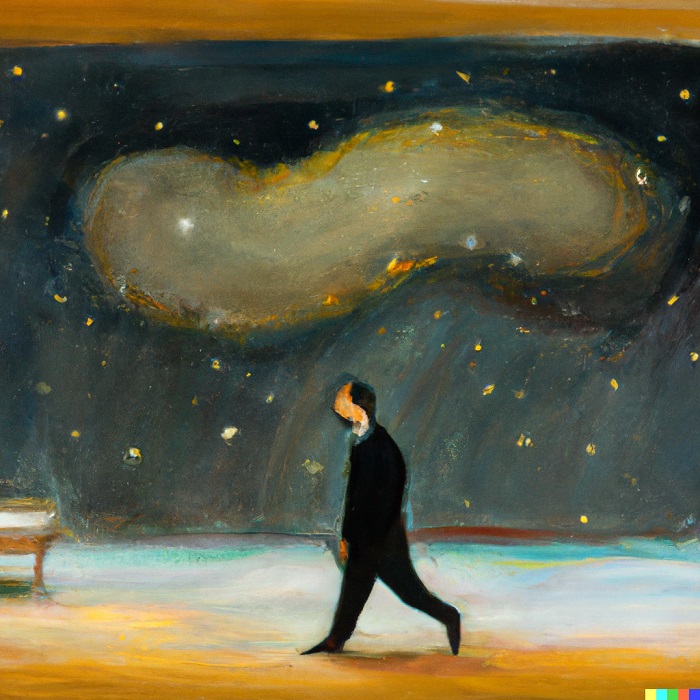
If this is the case – Mr. Ratajczak concludes – then this unattended matter can have different transparency depending on the size of the detector used to observe it. If Mr. Ratajczak's hypotheses were confirmed, we could probably explain in a new way what possibly is black matter (or even a part of it). The black matter constitutes 84% of the missing mass of the Universe.
But wait a minute, not so fast. Everything in science should happen in order. And there are still some steps to overcome.
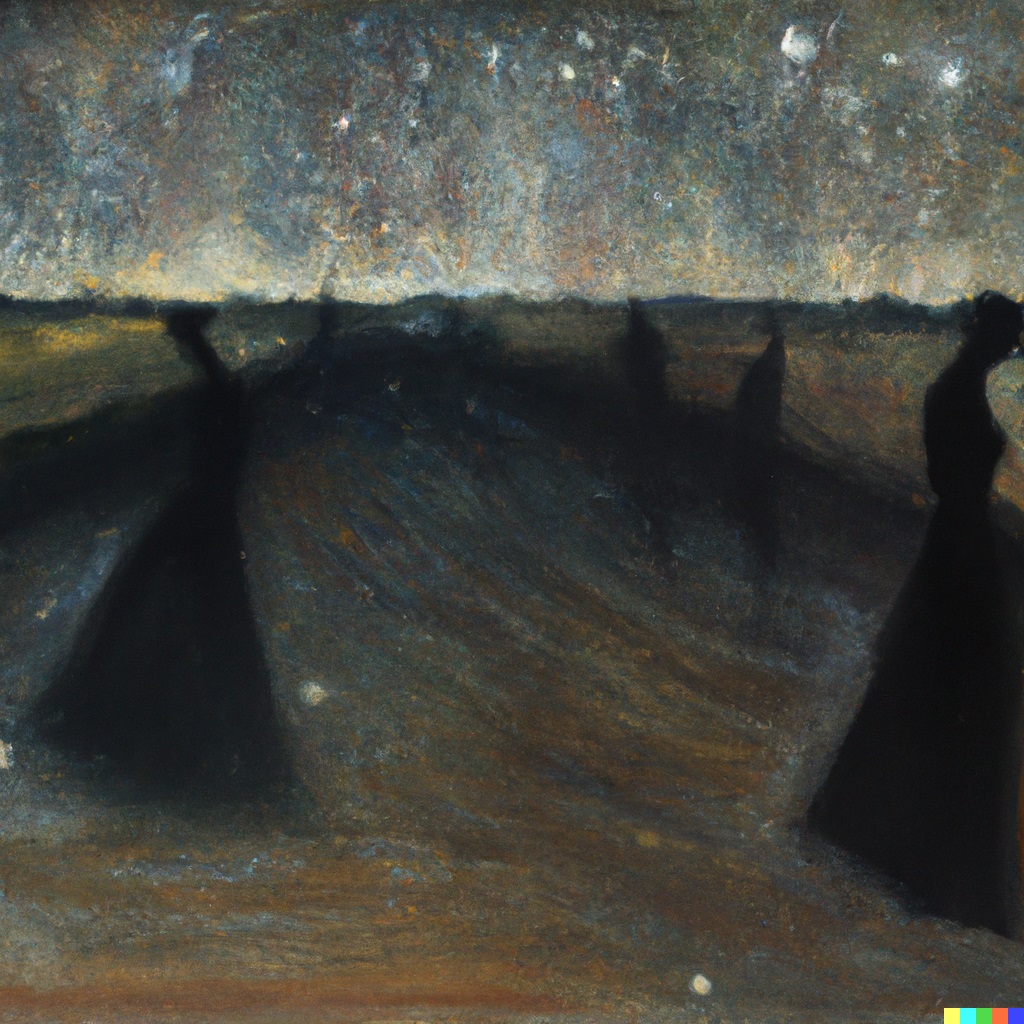
SELF-TAUGHT STRIVES TO BE APPRECIATED IN SCIENCE
A big obstacle is that Jakub Ratajczak is an IT specialist by education. And although his research on the frontier of quantum mechanics has been published in good scientific journals, such as "Scientific Reports" and "Results in Physics", Mr. Ratajczak did not graduate from physics. He is self-taught in these matters.
For now, physics consumes his free time and savings. He cooperates as a volunteer with the bioinformatics team at Warsaw University of New Technology Center under the direction's professor Mrs. Joanna Sułkowska. Therefore, he is affiliated with Warsaw University but does not have a full-time position there.
FIRST THEORY, THEN EXPERIMENT
Mr. Ratajczak knows that if he wants to develop "real" science, he needs to speak the language of science and submit his idea to an expert's review. Therefore, he first published a theoretical work regarding his hypothesis about the transparency of matter that was not exposed to any interactions in "Results in Physics" https://doi.org/10.1016/j.rinp.2020.103674.
However, no one was interested in his research. No one has commented on his hypothesis, either. Publishing work in a good magazine does not guarantee that others will cite your work. Our passionate researcher decided to check by himself if he was right. For that, he started to conduct an experiment that could test his hypothesis.
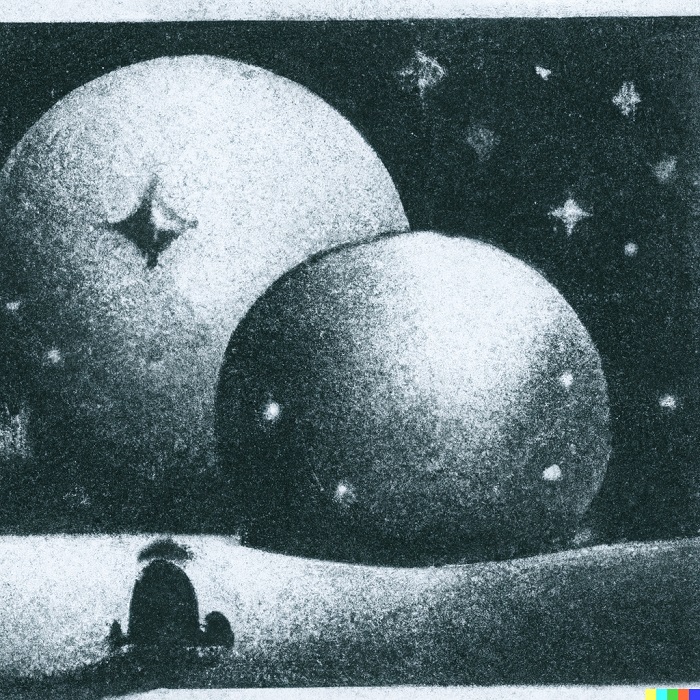
IT'S NOT VANITY. IT'S A VACUUM
"I had a choice, either I buy a new car or conduct an experiment on my own. It is obvious what my choice was. What do I need a new car for?"- Mr. Ratajczak smiles. And all expenses have accumulated a little. He needed a large vacuum chamber and laboratory equipment to observe ultra-diluted gas. Mr. Ratajczak comments that the research results of this experiment – described and published in a subsequent article in "Scientific Reports" – are "promising". However, they do not yet determine the validity of his hypotheses.
Recently, Mr. Ratajczak published another theoretical article, also in the magazine "Scientific Reports". This time, he described that such unexpected properties of ultra-diluted gases could also manifest themselves in closed systems. For example, in centers of galaxies or inside mentioned vacuum chambers.
What's the point of publishing more scientific publications if no one is interested in them? Mr. Ratajczak is aware that the next step to scientific success is that his idea will germinate in the minds of other scientists - to revive the scientific discussion on his idea. He created a website (https://smearedgas.org/), where he publishes his ideas, and he is seeking to have his hypotheses confirmed now – or refuted – by someone who works in quantum physics or astrophysics daily. The scientist who is inside the scientific system has authority and powers of persuasion.
For the time being, he has a foreign researcher on his side, a professor emeritus of physics from the University of Arkansas in Fayetteville, who is also the author of widely read books on quantum physics, Professor Art Hobson. "I have looked over Ratajczak’s work. It seems reasonable and correct to me, but I have not checked all of his calculations in detail. I assume that the reviewers of his published papers did check those calculations." – he gives that comment for Science in Poland. He also adds that, according to him, Mr. Ratajczak "certainly seems to know what he is talking about and demonstrates a good grasp of the relevant quantum physics". Prof. Hobson reveals that he is currently writing a book on the foundations of quantum mechanics. Most probably, he will include in this book a discussion about Mr. Ratajczak's works.
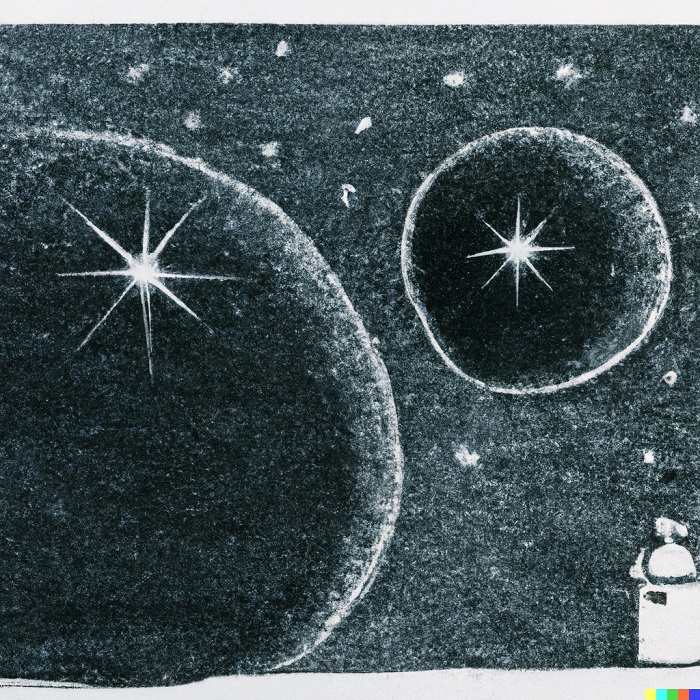
GREAT DISCOVERY OR A FAKE
"Science in Poland" asked Piotr Wasylczyk, who is a professor at Warsaw University in the Faculty of Physics, for comments regarding Mr. Ratajczak's publications. Mr. Ratajczak has consulted him on his research.
"Jakub Ratajczak's work - both the theoretical and experimental - seems coherent and, in my opinion, after a cursory analysis, no errors can be seen in it" – Prof. Wasylczyk rates.
However, it reserves that some additional work needs to be done to confirm or refute Ratajczak's hypotheses. Prof. Wasylczyk points out that he is not involved in quantum mechanics or astrophysics. Therefore, he decided to redirect Mr. Ratajczak to several other Polish researchers who would be better experts in this field.
Jakub Ratajczak concludes that although he is looking for Polish scientists to cooperate with, so far he has either encountered a lack of interest here or received critical, though not very substantive, comments about his work from them.
I heard from one researcher whom I asked for a consultation: "whether it's a great discovery or a fake"- he recalls. And immediately, he adds: "this is still one of the most favorable comments I have encountered in the Polish academic community.
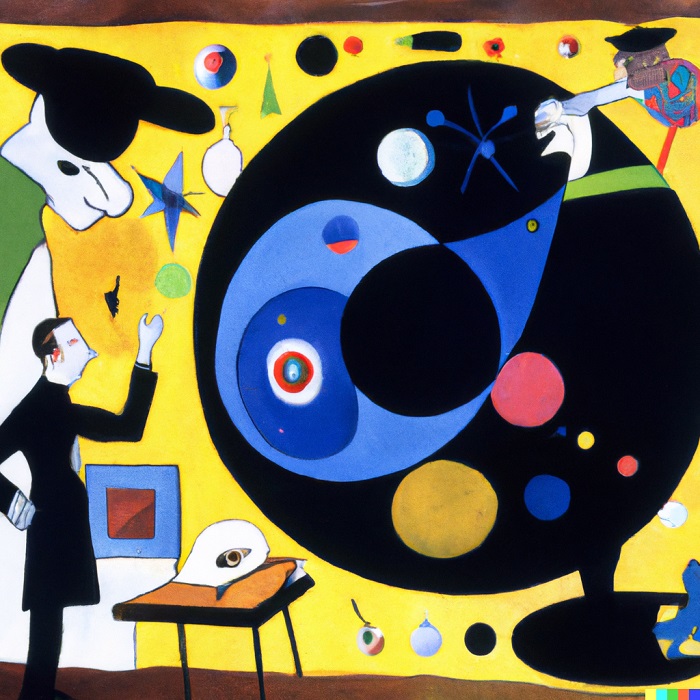
WHO WILL READ, WHO WILL ASK?
Mr. Ratajczak indicates that he is ready for discussion. "I am aware that I could somewhere make a mistake - either in theoretical or experimental work. If so, I would like someone to point that out to me. If I am wrong, I do not want to waste the following years of my life for these ideas", he says.
"The lack of interest in one's research work is hardly surprising. I have done myself about 70 scientific papers, and one-third of them have none or almost no citations" – states prof. Wasylczuk from Warsaw University. He points out that this is a widespread situation. In the academic community, there are so many publications – for the reason, that scientists are held by universities to account. And if there are so many articles to read, unusual, exceptional works may escape your attention.

SCIENCE IN PIECES
The physicist from Warsaw University points out that the approach to the study of the outskirts of galaxies that Ratajczak proposes is unconventional. Therefore it might be challenging to find an expert interested in this field.
I could take care of it if I went back to the knowledge I gained at the beginning of my scientific journey. However, now my specialization has gone entirely different – he says. And he adds that specialization and fragmentation are very characteristic of science nowadays. And from this, it comes a problem: researchers are so immersed in their specialties that it can be difficult for them to take up a completely fresh idea - from the periphery of their interests - a thought that could potentially negate the point of many years of their research. I came to physics from the outside, so I wasn't afraid to make unusual hypotheses – Mr. Ratajczak smiles.
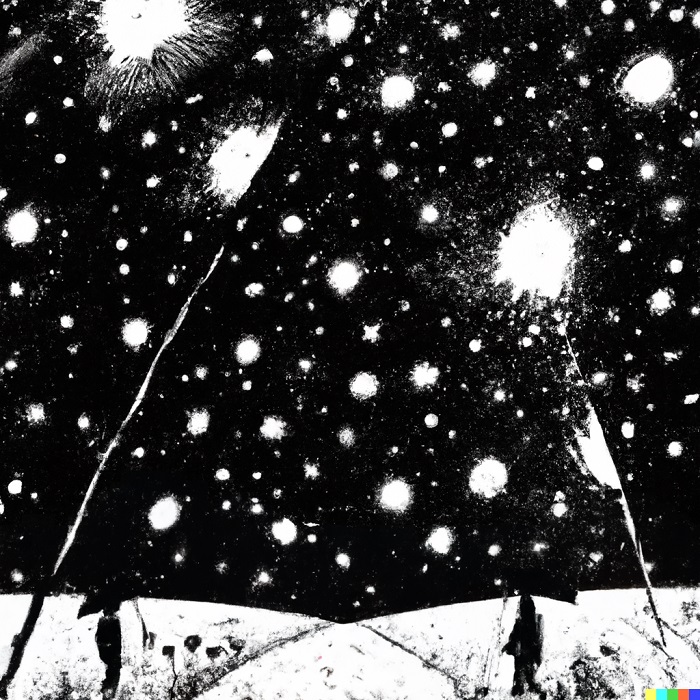
NEGATIVE REVIEW OF THE REVIEW SYSTEM
Mr. Ratajczak proposes an unusual approach. In this particular situation, can we trust that the reviewers from "Results in Physics" and "Scientific Reports" who assessed the work of a scientist without a doctoral degree - may have done so without fully understanding what they were talking about? - we asked Professor Wasylczyk.
This is always possible. It is a problem that affects virtually every scientific publication - comments the scientist. Reviewers in scientific journals (for which approval is required for the article to be published) - are selected by the magazine's editorial team. They are anonymous and are not paid for their work. Mr. Wasylczyk points out that when he receives reviews of his work, he usually can see if the reviewer understands this subject and gives sensible comments. However, sometimes he crosses a review where the reviewer asks unmeritorious questions. "I have doubts that the reviewer understands my paper" – assesses Wasylczyk. The researcher points out another problem with reviews. "The peer-review system worked well maybe 100 years ago when scientific papers were rare, and scientists of a particular field of knowledge knew each other and kept up to date with all publications. The courtesy of agreeing to write a review once every six months was not a problem" – he adds. He also points out that in recent decades, we would observe great accessibility to science, and there are so many researchers and scientific journals from all over the world. "Now I get requests for reviews several times a month, and a lot of them I must turn down". In his opinion, reviewers of a particular piece of work may become people who should not be commenting on a topic. The review process does not guarantee that the work is error-free – reminds M
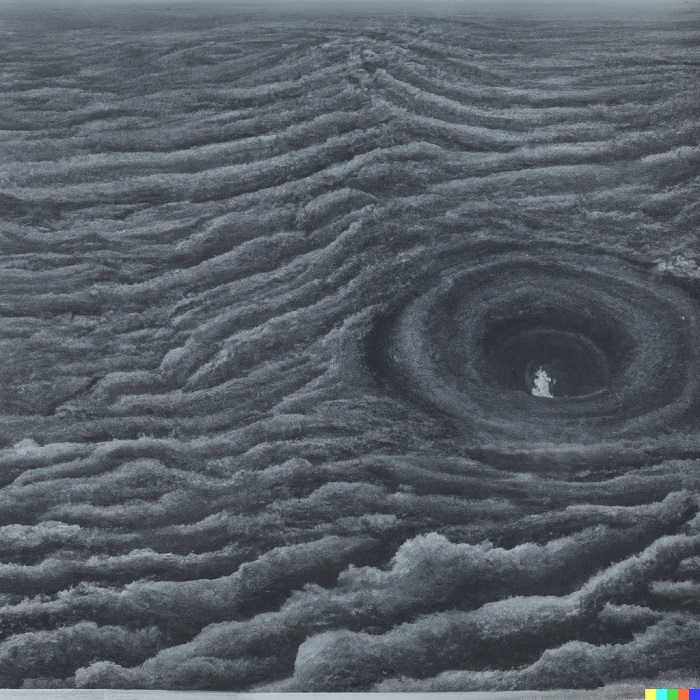
SO DARK, EMPTY, AND COLD THAT YOU CAN GO MAD
Now, after this digression regarding the criticism of the science system, let us return to the description of Mr. Ratajczak's idea. Because if it wasn't an interesting idea - and it's not certain if it is correct – why should we concern ourselves with it?
Mr. Ratajczak says he has been wondering about the properties of ultra-diluted gases that occur, for example, on the outskirts of galaxies.
He calculates that if there was such a high vacuum in those areas that there would be one hydrogen atom in a cubic centimeter, then - transferring to our scale - if an atom were the size of a man, its nearest neighbor would be halfway to the moon.
So, single particles can travel in the dark through the Universe for a very long time - hundreds, thousands, or even millions of years - unnoticed by anything or anyone, without colliding with other particles.
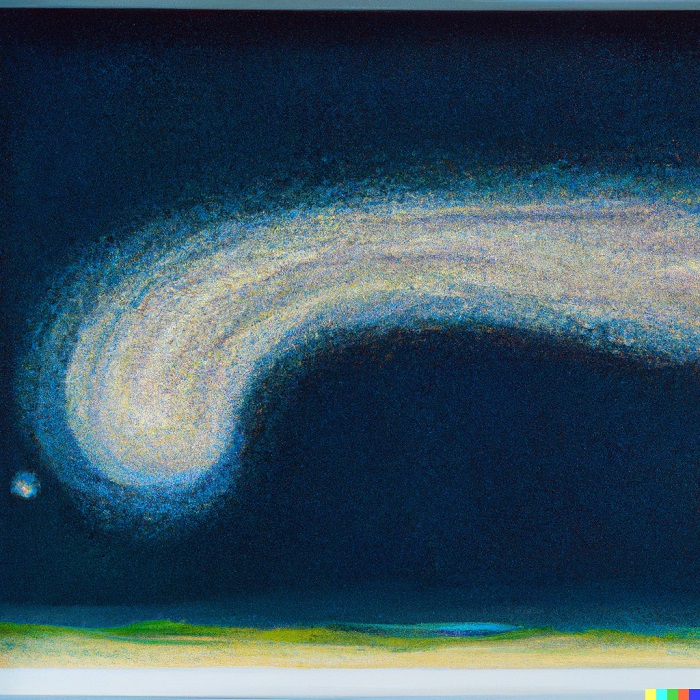
LONELINESS OF A LONG-DISTANCE RUNNER
And such solitary travelers - according to the analysis of our hobbyist researcher - have plenty of time to practice "quantum follies". "I suspect that because gas particles are not exposed to external interactions there, the non-local phenomena of quantum mechanics become important" – Mr. Ratajczak evaluates.
One of the best-known experiments demonstrating mentioned above non-locality is Young's experiment. When a particle is fired toward the screen, no one is looking at it, and the particle is also allowed to pass through either of the two slits, it appears to behave more like a wave than a "ball" of matter. It leaves an interference pattern on the screen behind the slits - as if it had passed through both slits simultaneously. However, when the particle is observed, and it is known exactly which slit it has passed through - the pattern on the screen is as if it were not a wave but rather a tiny ball. This experiment makes us realize that quantum follies reveal themselves after just fractions of seconds of "living in concealment". What about a situation if no one has been observing the particles for centuries, thousands, or millions of years? This made Mr. Ratajczak very curious.
In his published work, our hobbyist–researcher considered the quantum phenomenon - the so-called spreading of the wave function of gas particles (i.e., their non-locality). He showed that this leads to an increase in the transparency of the "cloud" of ultra-diluted gas compared to the predictions of the classical rules. Mr. Ratajczak believes that particles that no one observed for a long time simply become even more transparent to observers. Classic rules (the so-called Beer-Lambert rule) describe a transmittance model where the gas particles are considered very small balls. In literature, such gas is called a perfect one. "The gas model I proposed we can call a 'smeared gas'" - he says. Instead of balls, there are giant probability fields where a particle can react with something.

Professor Art Hobson (who is the author of a well and often-cited researched work suggesting that there are no particles but only fields), concludes that Mr. Ratajczak's research presents experimental support for the hypothesis that the quantum wave function is a real physical object in space. These predictions allow for the presence of clouds of ordinary matter gas (for example hydrogen) in galaxies - but in such a way that these clouds are invisible, i.e., transparent to observation.
Mr. Ratajczak explains, that "this is remarkably consistent with the requirements for so-called dark matter: a mysterious, invisible form of matter responsible, among other things, for stable gravitational confinement of galaxies".
According to Ratajczak's hypothesis, another interesting phenomenon related to this is that the transparency of such matter depends on the type of instrument you use to observe it.
The larger the diameter of the detector used, the less transparent the smeared gas should be. So again - as in Young's experiment - the properties of matter depend on the observer. Therefore, Mr. Ratajczak's idea is not just a philosophical theory about what might happen at the edge of the galaxy. His theories should be testable by experiments. Therefore, Mr. Ratajczak's research has a valuable property in science: they are falsifiable. However, it does not mean that anyone will attempt to falsify them.

THE THREE STORIES
Depending on the kind of prism we look at in the case of Mr. Jakub Ratajczak, several stories can be seen in it. Firstly, it could be a story about particles that travel through the Universe unnoticed by anyone, and these particles are becoming increasingly invisible. Secondly, it could also be a story about a man who realized that he does not want his ideas to pass through the world unnoticed by anyone. He wants to interact with an environment that is entirely new to him. Thirdly - it can be a story of an environment in which wanderers want to remain alone - they move in a long-established way. They avoid opportunities to change the trajectory of their movement even if these meetings would make them more visible.
PAP, Science in Poland, Ludwika Tomala, transl. Barbara Chruślińska
kap/













